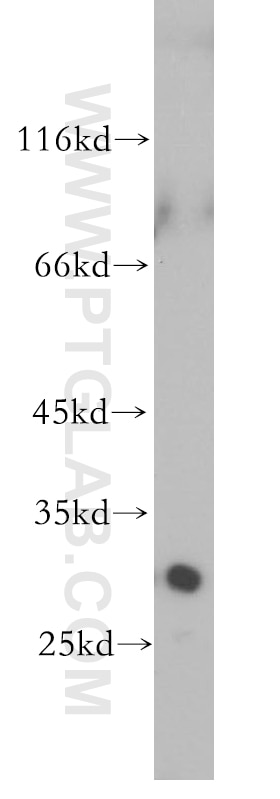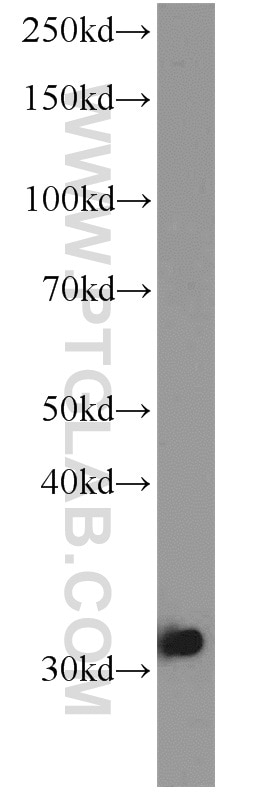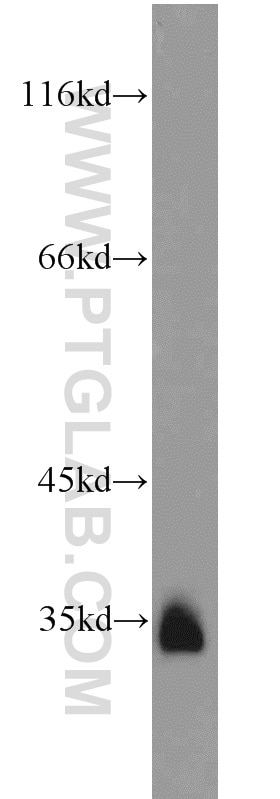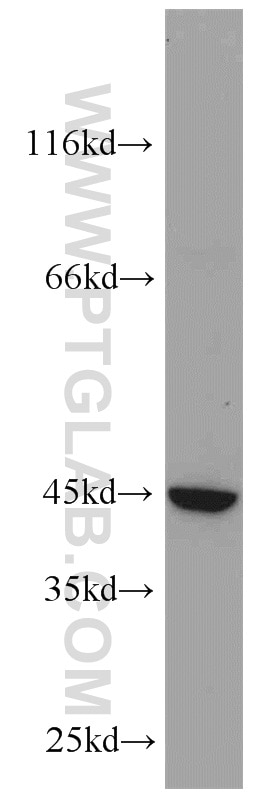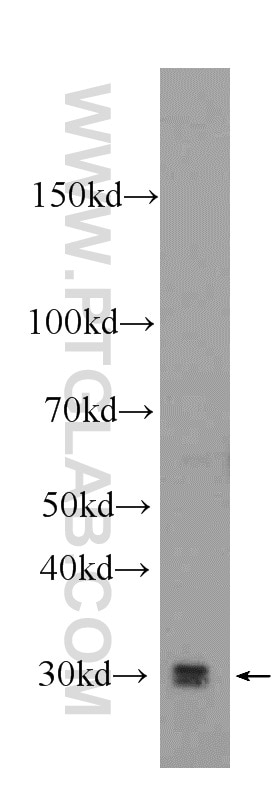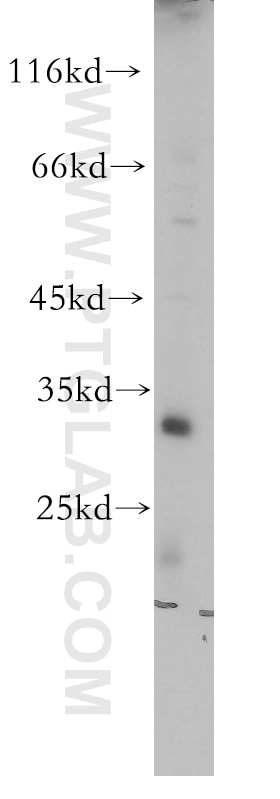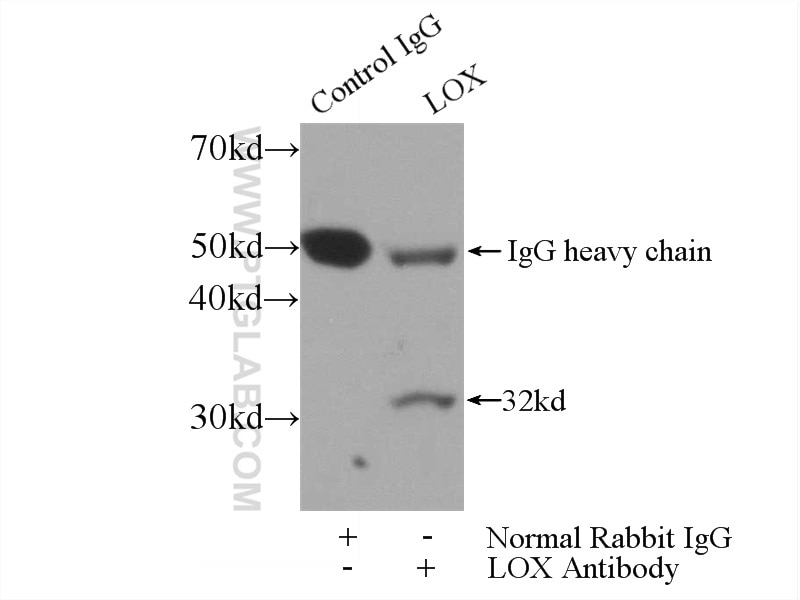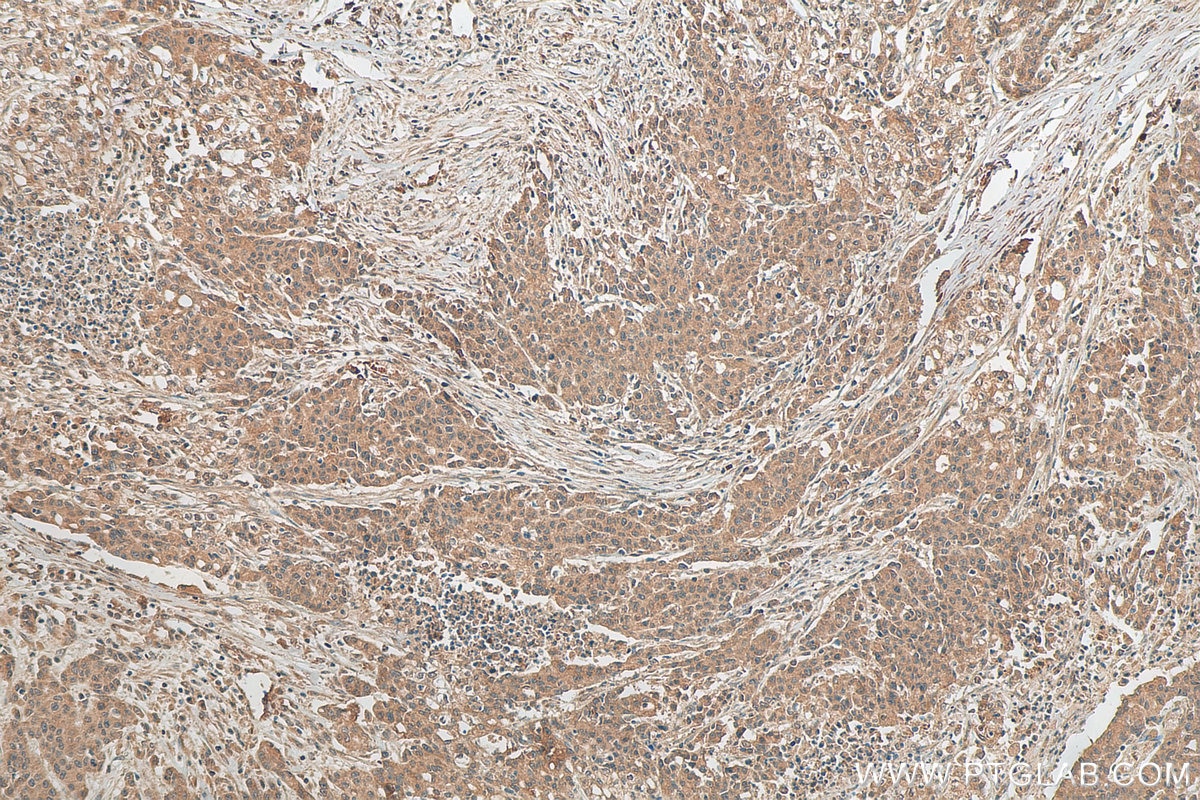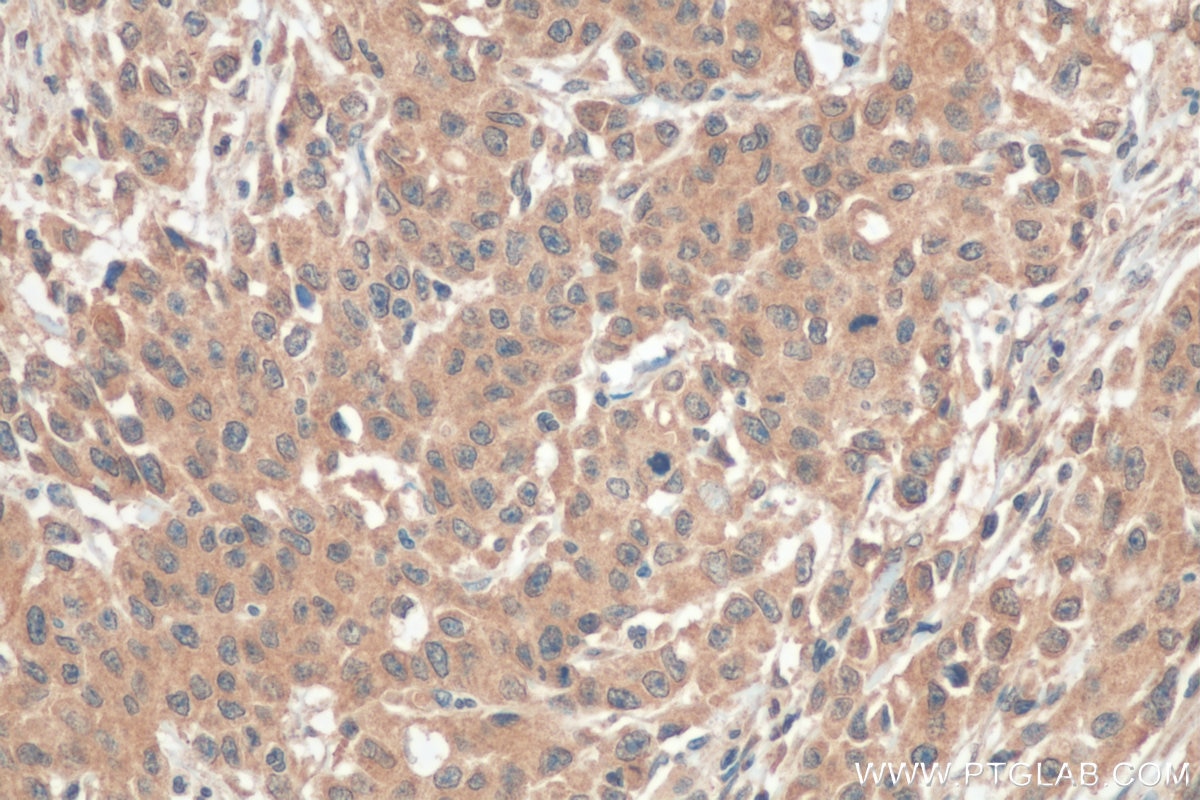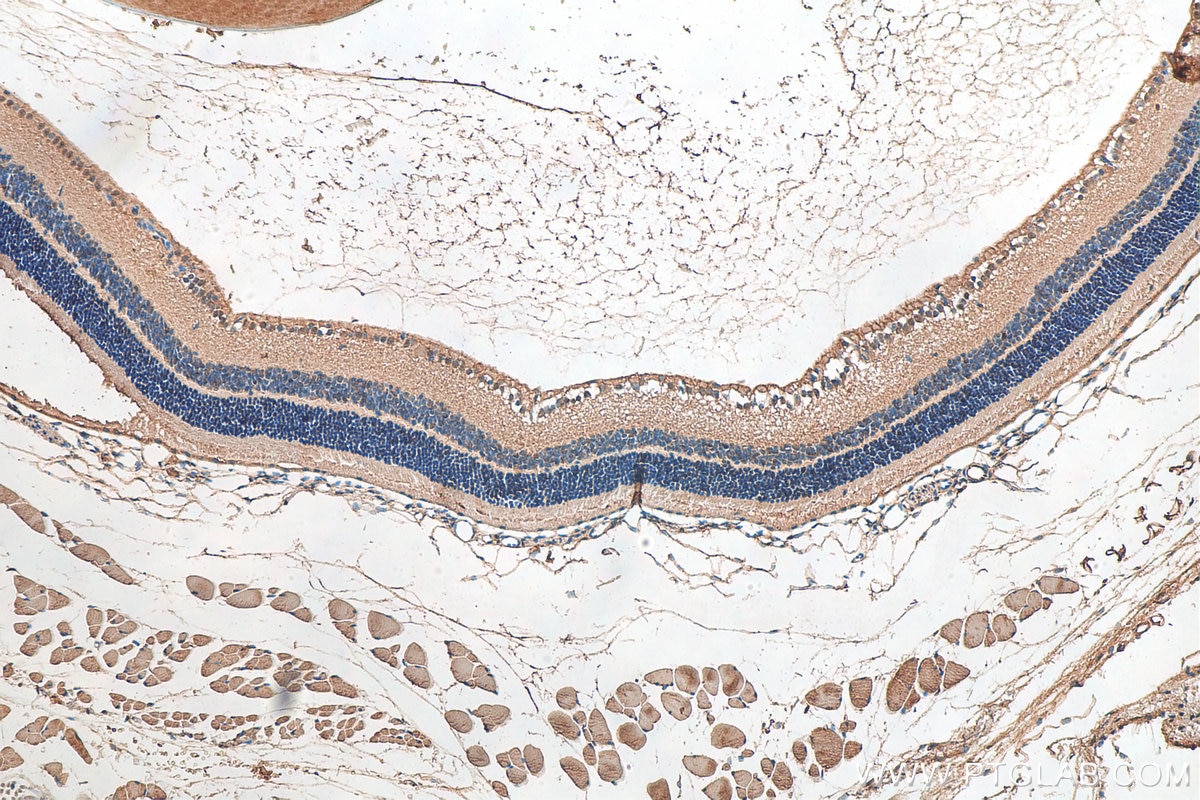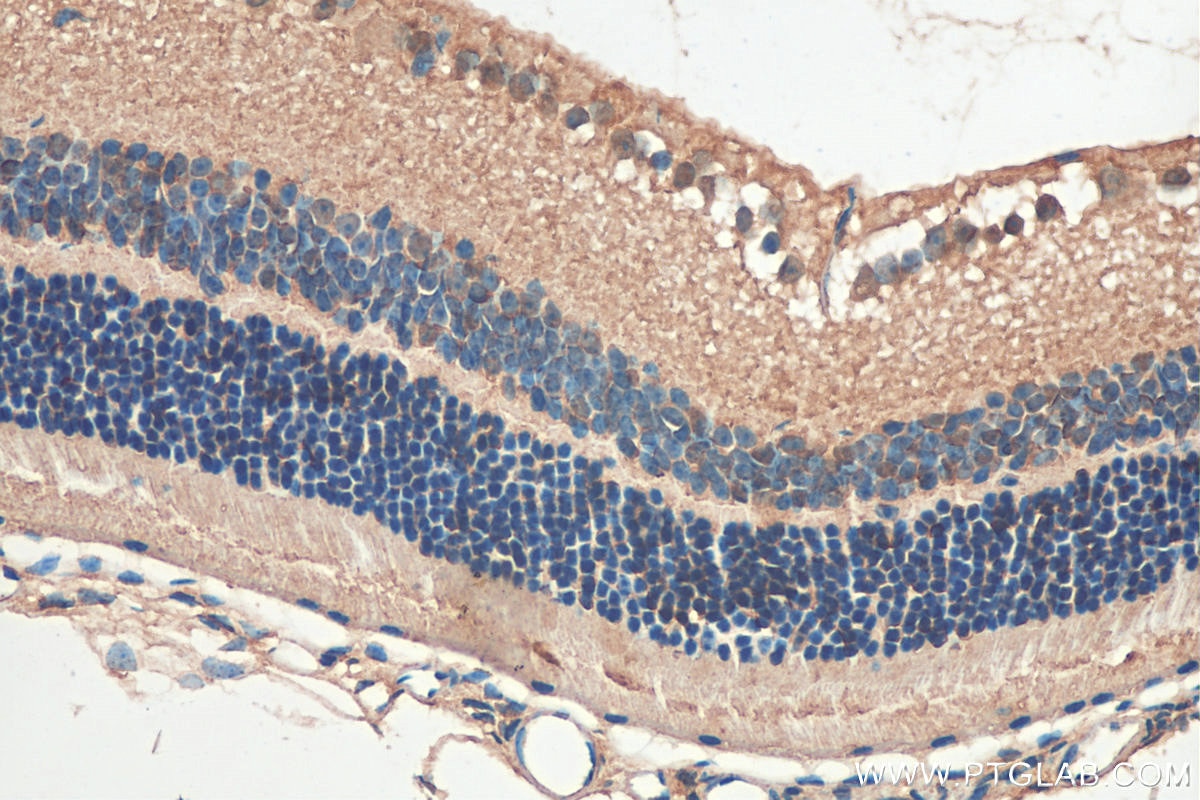- Phare
- Validé par KD/KO
Anticorps Polyclonal de lapin anti-LOX
LOX Polyclonal Antibody for WB, IP, IHC, ELISA
Hôte / Isotype
Lapin / IgG
Réactivité testée
Humain, souris et plus (2)
Applications
WB, IP, IF, IHC, ELISA
Conjugaison
Non conjugué
N° de cat : 17958-1-AP
Synonymes
Galerie de données de validation
Applications testées
| Résultats positifs en WB | cellules Jurkat, cellules A375, cellules MKN-45, cellules NIH/3T3, cellules SGC-7901, tissu de muscle squelettique de souris |
| Résultats positifs en IP | tissu de muscle squelettique de souris |
| Résultats positifs en IHC | tissu de cancer de l'estomac humain, tissu oculaire de souris il est suggéré de démasquer l'antigène avec un tampon de TE buffer pH 9.0; (*) À défaut, 'le démasquage de l'antigène peut être 'effectué avec un tampon citrate pH 6,0. |
Dilution recommandée
| Application | Dilution |
|---|---|
| Western Blot (WB) | WB : 1:500-1:1000 |
| Immunoprécipitation (IP) | IP : 0.5-4.0 ug for 1.0-3.0 mg of total protein lysate |
| Immunohistochimie (IHC) | IHC : 1:50-1:500 |
| It is recommended that this reagent should be titrated in each testing system to obtain optimal results. | |
| Sample-dependent, check data in validation data gallery | |
Applications publiées
| KD/KO | See 1 publications below |
| WB | See 25 publications below |
| IHC | See 12 publications below |
| IF | See 3 publications below |
Informations sur le produit
17958-1-AP cible LOX dans les applications de WB, IP, IF, IHC, ELISA et montre une réactivité avec des échantillons Humain, souris
| Réactivité | Humain, souris |
| Réactivité citée | rat, Humain, Lapin, souris |
| Hôte / Isotype | Lapin / IgG |
| Clonalité | Polyclonal |
| Type | Anticorps |
| Immunogène | LOX Protéine recombinante Ag12479 |
| Nom complet | lysyl oxidase |
| Masse moléculaire calculée | 417 aa, 47 kDa |
| Poids moléculaire observé | 32 kDa, 45-47 kDa |
| Numéro d’acquisition GenBank | BC074872 |
| Symbole du gène | LOX |
| Identification du gène (NCBI) | 4015 |
| Conjugaison | Non conjugué |
| Forme | Liquide |
| Méthode de purification | Purification par affinité contre l'antigène |
| Tampon de stockage | PBS avec azoture de sodium à 0,02 % et glycérol à 50 % pH 7,3 |
| Conditions de stockage | Stocker à -20°C. Stable pendant un an après l'expédition. L'aliquotage n'est pas nécessaire pour le stockage à -20oC Les 20ul contiennent 0,1% de BSA. |
Informations générales
LOX is a member of a multigene family (LOX, LOXL, LOXL2, LOXL3, and LOXL4). Lysyl oxidase (LOX), a copper-dependent enzyme, plays a critical role in the formation and repair of the extracellularmatrix (ECM) by catalyzing the crosslinking of elastin and collagen. LOX expression appears to be upregulated in malignancies and has recently been suggested to play a role in regulating tumor metastasis. It is synthesized as a 50 kDa proenzyme, secreted, and processed into an 32 kDa mature, active enzyme and an 18-kDa propeptide.
Protocole
| Product Specific Protocols | |
|---|---|
| WB protocol for LOX antibody 17958-1-AP | Download protocol |
| IHC protocol for LOX antibody 17958-1-AP | Download protocol |
| IP protocol for LOX antibody 17958-1-AP | Download protocol |
| Standard Protocols | |
|---|---|
| Click here to view our Standard Protocols |
Publications
| Species | Application | Title |
|---|---|---|
Cell Syst Rare Disease Mechanisms Identified by Genealogical Proteomics of Copper Homeostasis Mutant Pedigrees. | ||
Oncogene Stromal nicotinamide N-methyltransferase orchestrates the crosstalk between fibroblasts and tumour cells in oral squamous cell carcinoma: evidence from patient-derived assembled organoids | ||
Oncogene Cell-to-cell heterogeneity of EWSR1-FLI1 activity determines proliferation/migration choices in Ewing sarcoma cells. | ||
Int J Nanomedicine Gallbladder Cancer Progression Is Reversed by Nanomaterial-Induced Photothermal Therapy in Combination with Chemotherapy and Autophagy Inhibition. | ||
ACS Biomater Sci Eng Matrisome Provides a Supportive Microenvironment for Skin Functions of Diverse Species. | ||
